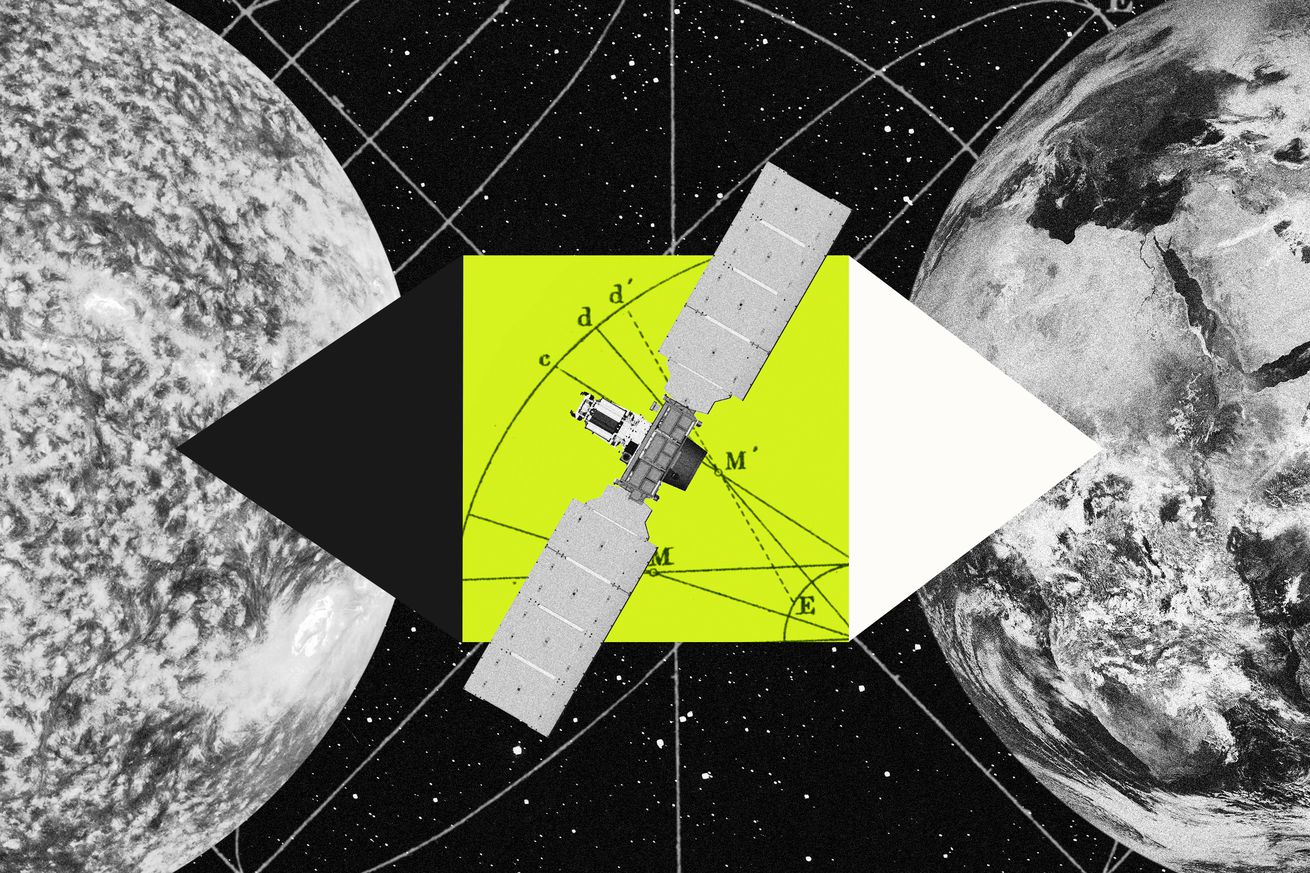
Space-based solar power is having its moment in the sun
Beaming electricity down to Earth from solar panels in space has been a clean energy dream for decades. Even though the technology still has a long way to go before it can keep the lights on at home, there’s more hype than ever that space-based solar power stations could actually work.
A major milestone was announced this month when researchers at Caltech said that a prototype launched into space was able to beam a small amount of power to Earth. It was an important first for the nascent technology, and other researchers around the world are racing to make similar progress with funding from governments trying to reach their climate goals.
“I have a hard time not letting my imagination run wild when I start looking at this.”
In space, solar panels can soak up unfiltered sunlight around the clock with no setting sun. They might be able to generate up to eight times as much electricity as land-based solar panels, according to Caltech. The hope is that we might be able to one day harness that abundant clean energy here on Earth or potentially even outposts on the Moon.
“I have a hard time not letting my imagination run wild when I start looking at this. It has a strange seductiveness like that,” Nikolai Joseph, a senior technology analyst at NASA Goddard Space Flight Center, tells The Verge.
How feasible it is to turn those dreams into reality anytime soon is the subject of a study Joseph is working on with colleagues for NASA. Caltech’s demonstration was a game-changer, he says. “If you’d asked me if that was going to happen a year ago, I would have said, ‘Oh no, probably not.’ And then they just did it, which is wild,” he says. Joseph compares the milestone to a major breakthrough in nuclear fusion that made headlines last year.
Caltech showed that it could overcome one of the trickiest engineering challenges with space-based solar power: how to safely send electricity zooming from space down to Earth. A SpaceX rocket launched a spacecraft carrying Caltech’s prototype into space in January. The prototype includes solar cells and an array of transmitters that can beam energy to different locations. The photovoltaic cells convert sunlight into electricity, which then needs to be converted into microwaves so it can be transmitted wirelessly. (Caltech has a neat video explainer.)
A few months after launch, Caltech’s prototype was able to beam some power through space and ultimately back to the university. It started small, sending microwaves to receiver arrays about a foot away from the transmitter. The receiver arrays were able to convert the microwaves back to direct current (DC) electricity and use that to light up a couple of LEDs. The prototype also beamed a “detectable” amount of power down to a receiver on the rooftop of a Caltech lab in Pasadena, California.
“We had, of course, tested it on Earth, but now we know that it can survive the trip to space and operate there,” Ali Hajimiri, a professor of electrical and medical engineering who led the Caltech team, said in a press announcement. “To the best of our knowledge, no one has ever demonstrated wireless energy transfer in space even with expensive rigid structures. We are doing it with flexible lightweight structures and with our own integrated circuits. This is a first.”
And it’s looking like it might not be the last. Earlier this week, the UK announced £4.3 million in government funding for several research initiatives. That includes a group at Queen Mary University of London developing its own wireless system for beaming microwave energy from place to place. And the US Naval Research Laboratory launched an experiment to the International Space Station earlier this year with the goal of beaming power across space using laser transmitters.
Even though research is ramping up now, the first patent for space-based solar power was filed in 1968 by aerospace engineer Peter Glaser. NASA and the Department of Energy took an interest in the concept in the 1970s as the world faced an energy crisis. But it was ultimately deemed too expensive to pursue the idea.
“The cost is the big issue.”
Even today, “The cost is the big issue,” says Xiaodong Chen, a professor of microwave engineering at Queen Mary University of London. “You’re building such big infrastructure in space.”
The economics are starting to change, though, with the commercial space industry driving down launch costs. The most ambitious timeline so far is for this technology to be ready to power homes and businesses on Earth by 2050, Chen says.
By 2050, in order to meet climate goals set in the Paris agreement, greenhouse gas emissions need to reach net zero. There’s no chance of hitting that goal overnight. So space-based solar shouldn’t be seen as a competitor to Earth-bound solar farms, says a 2022 report on the technology by the European Space Agency. The world needs as much renewable energy as it can get, as soon as it can get it.

